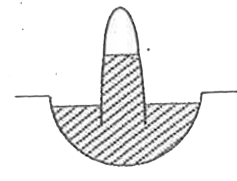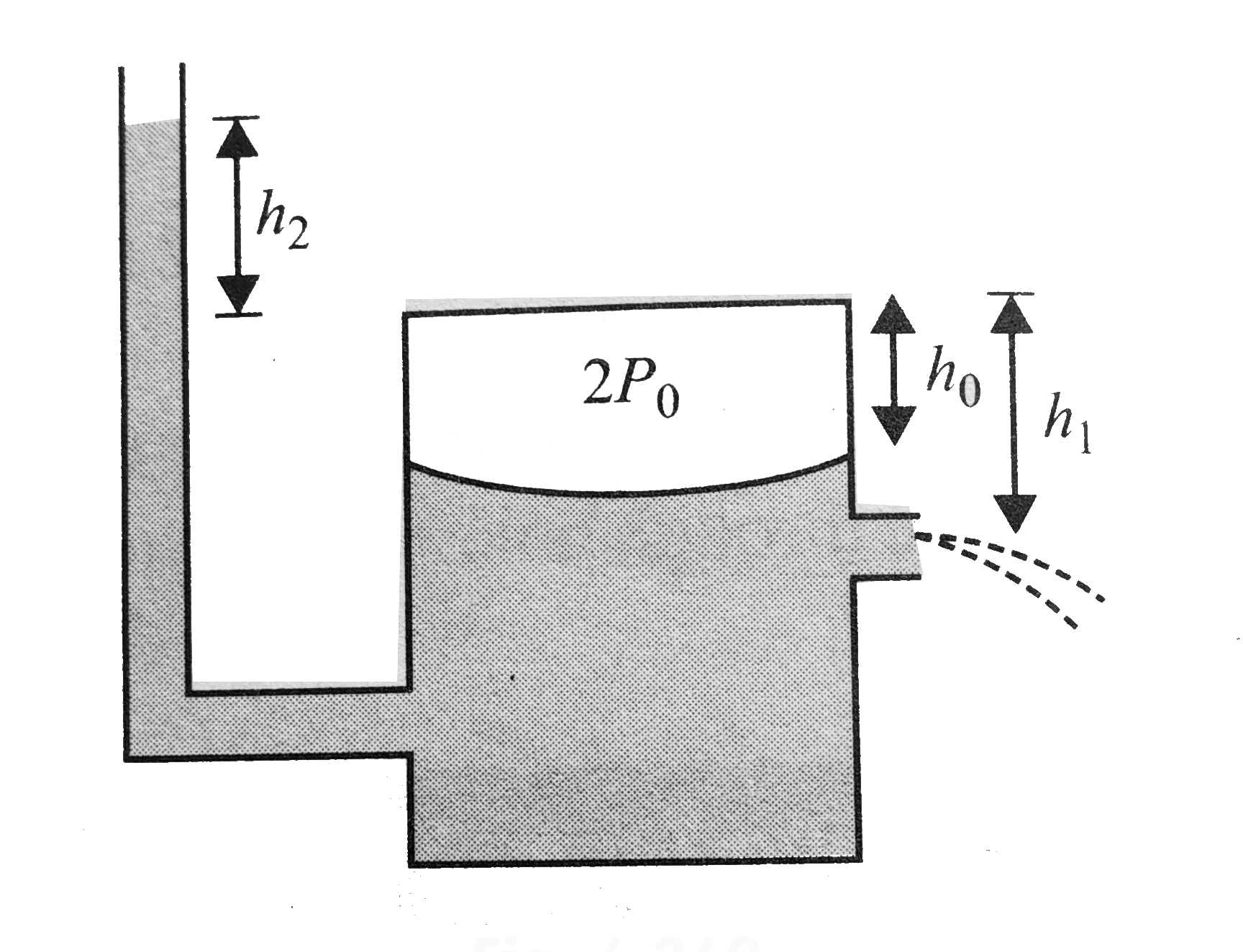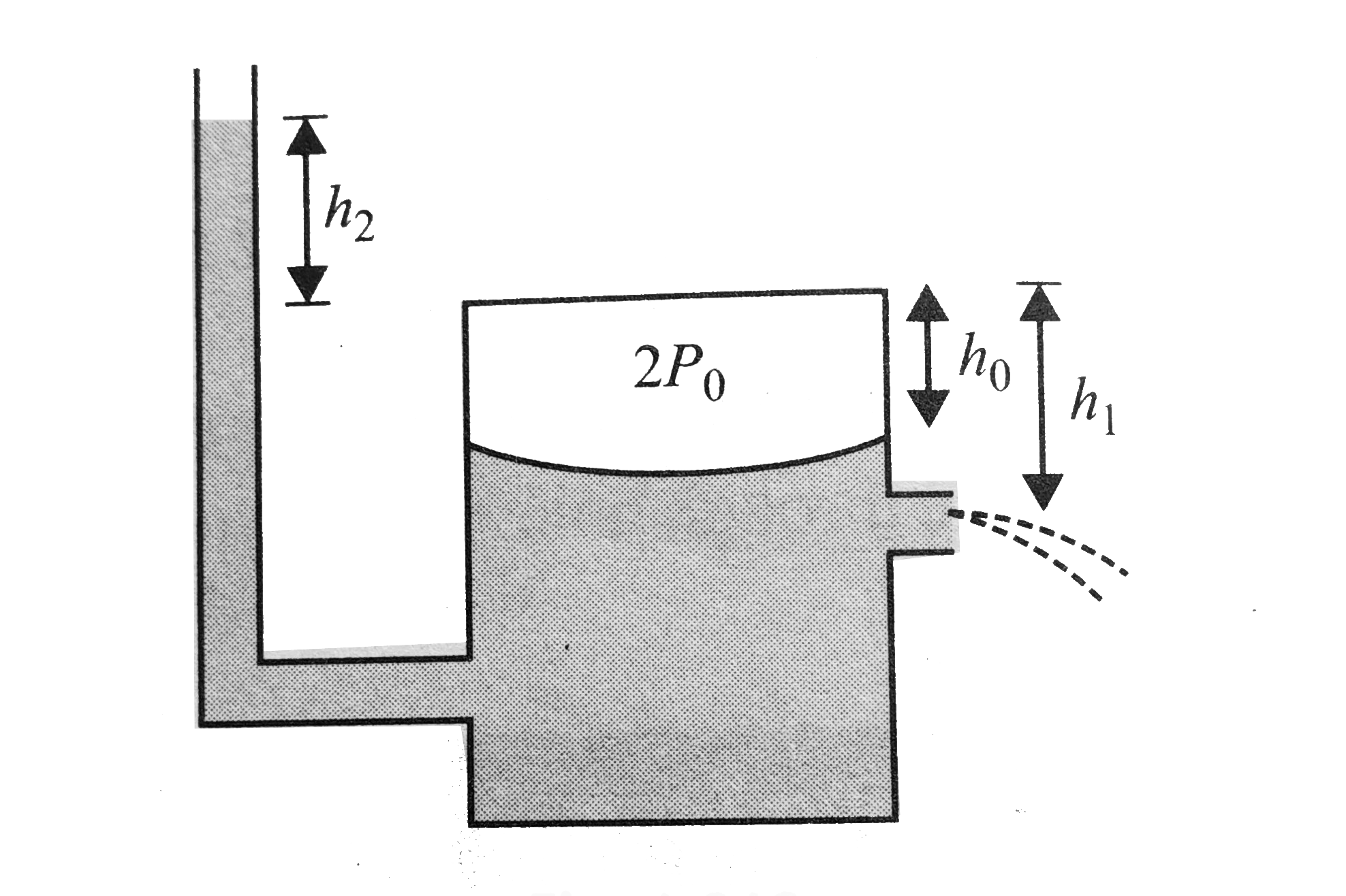A porpous cup is filled with H2 gas at the atmospheric pressure and is connected to a thin glass tube a vertical position. The second end of the tube is immersed in water below it. After some time, water rises in the glass tube. Explain giving reasons.
To explain the phenomenon of water rising in a glass tube connected to a porous cup filled with hydrogen gas, we can break down the explanation into clear steps:
1. Understanding the Setup:
- A porous cup is filled with hydrogen gas (H₂) at atmospheric pressure.
- The cup is connected to a thin glass tube that is positioned vertically, with the other end immersed in water.
2. Initial Conditions:
- Initially, the atmospheric pressure is acting on the hydrogen gas inside the porous cup.
- The water level in the glass tube is at the same level as the water outside the tube.
3. Gas Diffusion and Pressure Change:
- Over time, the hydrogen gas will diffuse out of the porous cup through its walls.
- As hydrogen gas escapes, the pressure inside the cup decreases.
4. Effect of Pressure on Water Level:
- The decrease in pressure inside the porous cup creates a pressure difference between the outside atmospheric pressure and the pressure inside the cup.
- The atmospheric pressure acting on the water outside the tube is now greater than the pressure inside the cup.
5. Water Movement:
- Due to this pressure difference, the water outside the tube is pushed into the tube to equalize the pressure.
- This results in the water rising in the glass tube.
6. Capillary Action:
- Additionally, the rise of water in the tube can also be influenced by capillary action, which is the spontaneous movement of liquid in a narrow space due to adhesive and cohesive forces.
- Adhesive forces between the water molecules and the glass of the tube pull the water up, while cohesive forces among the water molecules help maintain the column of water.
7. Conclusion:
- Therefore, the rise of water in the glass tube is primarily due to the pressure difference created by the diffusion of hydrogen gas, along with the effects of capillary action.
- A porous cup is filled with hydrogen gas (H₂) at atmospheric pressure.
- The cup is connected to a thin glass tube that is positioned vertically, with the other end immersed in water.
- Initially, the atmospheric pressure is acting on the hydrogen gas inside the porous cup.
- The water level in the glass tube is at the same level as the water outside the tube.
- Over time, the hydrogen gas will diffuse out of the porous cup through its walls.
- As hydrogen gas escapes, the pressure inside the cup decreases.
- The decrease in pressure inside the porous cup creates a pressure difference between the outside atmospheric pressure and the pressure inside the cup.
- The atmospheric pressure acting on the water outside the tube is now greater than the pressure inside the cup.
- Due to this pressure difference, the water outside the tube is pushed into the tube to equalize the pressure.
- This results in the water rising in the glass tube.
- Additionally, the rise of water in the tube can also be influenced by capillary action, which is the spontaneous movement of liquid in a narrow space due to adhesive and cohesive forces.
- Adhesive forces between the water molecules and the glass of the tube pull the water up, while cohesive forces among the water molecules help maintain the column of water.
- Therefore, the rise of water in the glass tube is primarily due to the pressure difference created by the diffusion of hydrogen gas, along with the effects of capillary action.
Topper's Solved these Questions
- STATES OF MATTERBOOK - CENGAGE CHEMISTRY ENGLISHCHAPTER - STATES OF MATTEREXERCISE - Exercises (Fill In The Blanks)
25 Videos
- STATES OF MATTERBOOK - CENGAGE CHEMISTRY ENGLISHCHAPTER - STATES OF MATTEREXERCISE - Exercises (Ture False)
25 Videos
- STATES OF MATTERBOOK - CENGAGE CHEMISTRY ENGLISHCHAPTER - STATES OF MATTEREXERCISE - Concept Application 5.3
1 Videos
- SOME BASIC CONCEPTS AND MOLE CONCEPTBOOK - CENGAGE CHEMISTRY ENGLISHCHAPTER - SOME BASIC CONCEPTS AND MOLE CONCEPTEXERCISE - Archives Subjective
11 Videos
- STOICHIOMETRYBOOK - CENGAGE CHEMISTRY ENGLISHCHAPTER - STOICHIOMETRYEXERCISE - Archives Subjective
33 Videos
Similar Questions
An empty glass bottle is fitted with a narrow tube at its mouth. The open end of the tube is kept in a beaker containing water. When the bottle is heated, bubbles of air are seen escaping into the water. Explain the reason.
View SolutionThe lower end of a capillary tube is immersed in mercury. The level of mercury in the tube is found to be 2 cm below the outer level. If the same tube is immersed in water, up to what height will the water rise in the capillary ?
View Solution
Knowledge Check
A capillary tube of radius r is immersed in water and water rises in to a height h. The mass of water in the capillary tube is 5g. Another capillary tube of radius 2 r is immersed in water. The mass of water that will rise in this tube is
A2.5 gB5.0 gC10 gD20 g
When a fluoride is heated with concentration H2SO4 in a glass tube and if a drop of water is held at the mouth of the glass tube, a white deposit formed is of
View SolutionTorricelli was the first do devise an experiment for measuring atmospheric pressure . He took calibrated hard glass tube , 1 m in lengt and of uniform cross section , closed at one end . He filled the whole tube with dry mercury taking care than no air or water droplets remain inside the tube , closed the opposite end of the tube tightly with thumb and inverted it . He put this inverted mercury tube into a mercury through , taking care that the end of the tube remains inside the mercury through , An interesting thing was noticed . Mercury in the tube fell down at first and then stopped at a particular position . The height was 76 cm above the free surface of mercury in the through . When the given tube was inclined or lowered in the mercury trough , the vertical haight of mercury level in the tube was always found constant .
Torricelli explained this by saying that the free surface of mercury in the trough . Hence , the hydrostatic pressure exerted by the trough measures the atmospheric pressure .
If an additional hole is also made at P ' at the top point of the tube , then

A. mercury will not come out of the tube
B. mercury may come out of the tube after some time .
C. mercury will come out of the tube instantly
D. none of these
View SolutionFigure shows a large closed cylindrical tank containing water. Initially, the air trapped above the water surface has a height h0 and pressure 2p0 where rh0 is the atmospheric pressure. There is a hole in the wall of the tank at a depth h1 below the top from which water comes out. A long vertical tube is connected as shown.

Find the height h2 of the water in the long tube above top initially.
View SolutionFigure shows a large closed cylindrical tank containing water. Initially, the air trapped above the water surface has a height h0 and pressure 2p0 where rh0 is the atmospheric pressure. There is a hole in the wall of the tank at a depth h1 below the top from which water comes out. A long vertical tube is connected as shown.

Find the height of the water in the long tube above the top when the water stops coming out of the hole.
View Solutiontwo glass bulbs of equal volume are connected by a narrow tube and are filled with a gas at 0(∘)C at a pressure of 76cm of mercury. One of the bulbs is then placed in melting ice and the other is placed in a water bath maintained at 62∘C.What is the new value of the pressure inside the bulbs? The volume of the connecting tube is neigligible.
View SolutionFigure shows a large closed cylindrical tank containing water, Initially the air trapped above the water surface has a height h0and pressure 2p0 where p0is the atmospheric pressure. There is a hole in the wall of tank at a depth h1below the top from which water comes out. A long vertical tube is connected as shown. (a) Find the height h2 of the water in the long tube above the top initially. (b) Find the speed with which water comes out of hole.(c)Find the height of the water in the long tube above the top when the water stops coming out of the hole.

View SolutionA vertical glass capillary tube, open at both ends, contains some water. Which of the following shapes may not be taken by the water -in the tube?
View Solution
